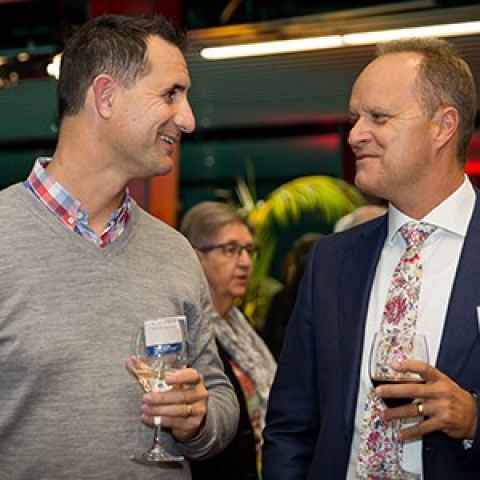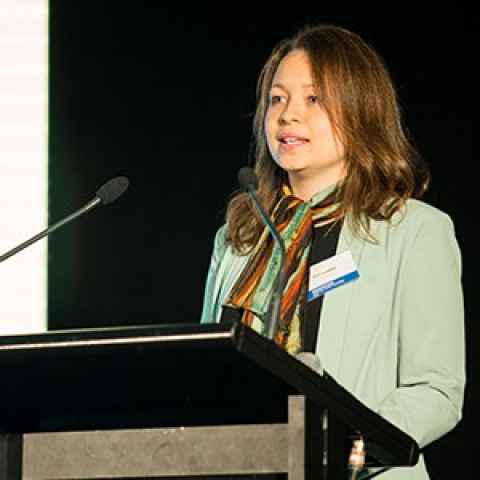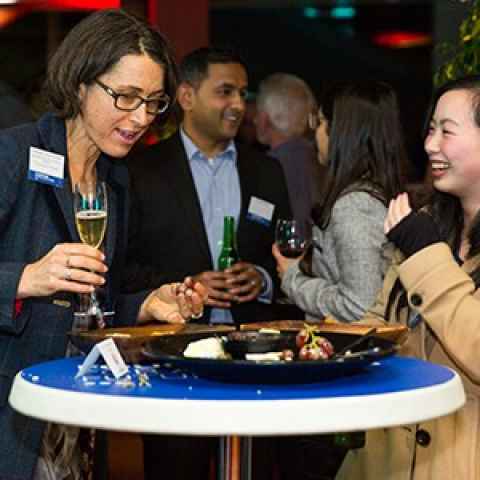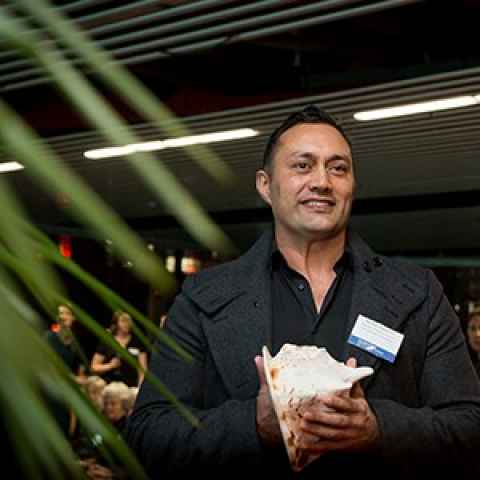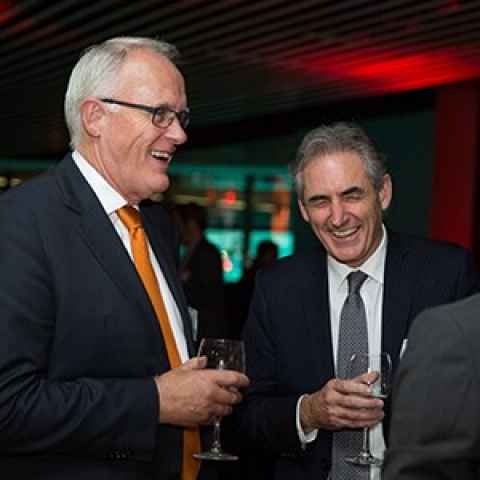Foundations for all our futures: An evening of Science celebration
5 December 2017
The great and good of politics and philanthropy gathered in late July to celebrate the official opening of Building 302 – the newest addition to the Faculty of Science’s state-of-the-art Science Centre.

Distinguished guests arrived to a red carpet, welcome celebratory drinks, and the names of donors and researchers projected onto the raw concrete wall of Building 302, all to honour those who have made a significant contribution to Science at the University of Auckland, and to formally open Building 302 to students, scholars, supporters, alumni and friends.
The evening’s celebration also included the official launch of the Science-specific segment of the University of Auckland’s Campaign For All Our Futures: four featured questions we have set ourselves the challenge of answering, with support from esteemed friends and alumni of the University:
- Can we uncover the mysteries of the human brain?
- Can we build an economy based on what we know, not just what we grow?
- Can we reveal the secrets of our world using modern instruments?
- Can we bring back the dawn chorus?
This final question is one the faculty is a step closer to answering thanks to a landmark donation by alumnus Dr George Mason, which has allowed the establishment of a new environment research centre, also formally opened during the evening. The George Mason Centre for the Natural Environment (GMCNE) aims to build research connections and collaboration across the University, and will focus on protection and conservation of New Zealand’s wildlife and natural land and seascapes by producing independent research on the restoration of species, habitat and ecosystems.
In a fitting echo of the disciplines they house, the world-class Science offices, break-out areas and laboratories blend manmade materials and elements of the natural environment to create spaces that foster human interaction. Though undoubtedly cutting-edge in design and construction, the building holds light and open space at its heart through the use of large windows, skylights and multiple atria.
Science is at the heart of our lives and science is what’s required to solve the world’s most challenging problems. This building is the perfect place for us to do just that.
With the addition of Building 302, the new Science Centre is a catalyst for collaboration across the Science disciplines, and will be a cornerstone for our students and staff, allowing them to easily engage in interdisciplinary research that will transform lives, and answer the key questions for all our futures.
Following a formal welcome by faculty Kaiārahi Michael Steedman, Dr Erin Leitao from the School of Chemical Sciences acted as MC for the evening and welcomed speeches by Dean of Science Professor John Hosking, Vice-Chancellor Professor Stuart McCutcheon, Science Scholar Jessica Patterson and Tuākana Science programme member Leilani Ioelu.
“Science is at the heart of our lives and science is what’s required to solve the world’s most challenging problems. This building is the perfect place for us to do just that,” said Professor John Hosking in his opening speech.The audience also watched a video timeline of the history of the Faculty of Science, reflecting on significant scientific achievements as well as announcing the faculty’s goals and priorities for the future.
Inadvertently bumping the VC up the order of proceedings and taking his place as the penultimate speaker, Prime Minister Bill English echoed the words of Her Majesty Queen Elizabeth, the Queen Mother (who, in 1966, opened Stage A of the Science building, what is now Building 301) when he had “the pleasure of officially declaring the building open”, before making a swift exit to catch his plane back to Wellington.
A flying visit it may have been, it was no less exciting for some of our students – passing the foyer windows on their way home, they spotted the PM on stage and saw fit to snap a few selfies for posterity. And the new Science facilities, too, are for posterity; they are the foundations for all our futures.
inSCight
This article appears in the December 2017 edition of inSCight, the print magazine for Faculty of Science alumni.

